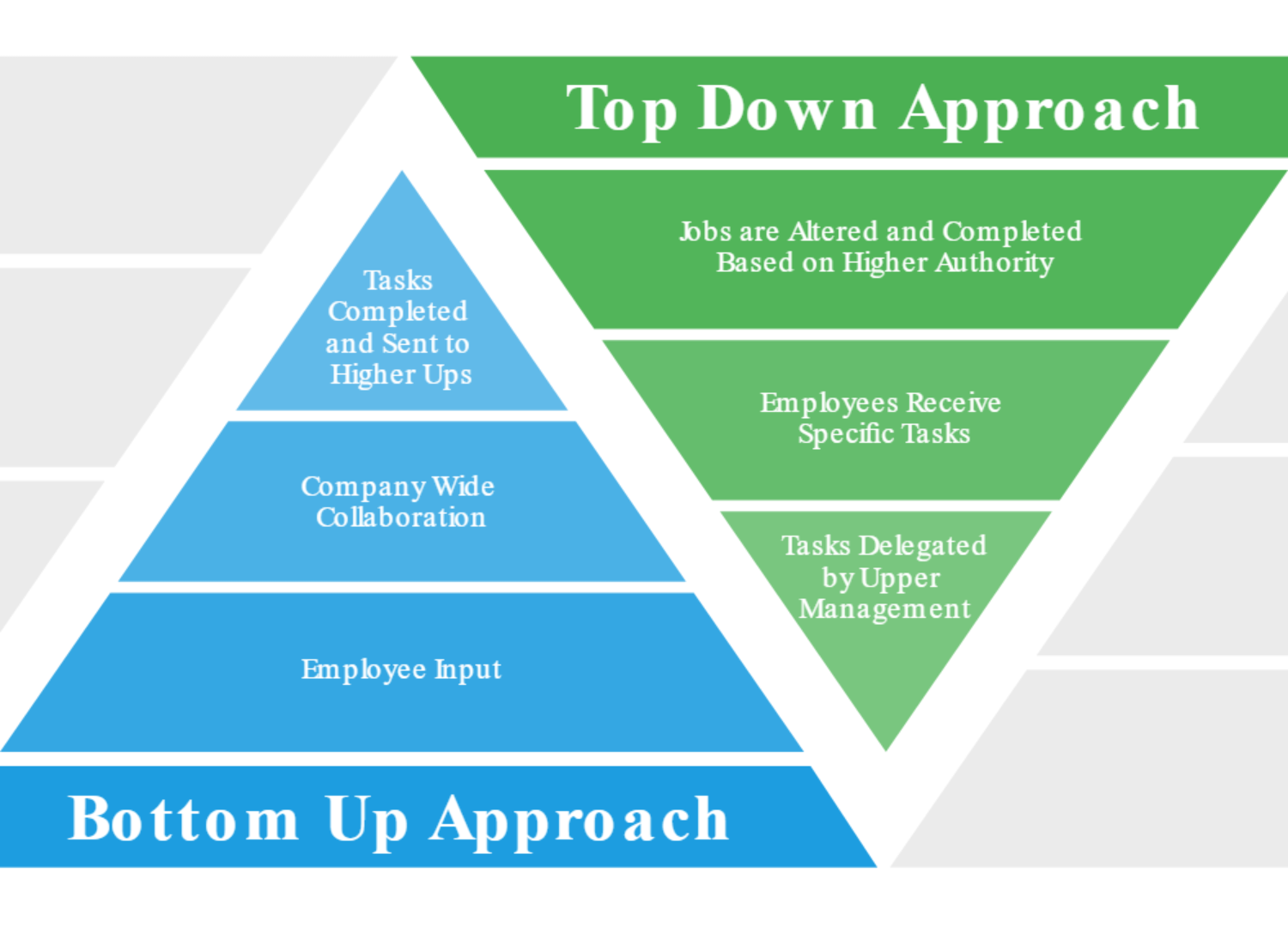We’ve all heard of the concept of the Butterfly Effect – the idea that small things can have non-linear impacts on a complex system..

The concept is imagined with a butterfly flapping its wings and causing a cyclone or typhoon. Of course, a single act like the butterfly flapping its wings cannot cause a such a storm, however, small events can serve as catalysts that act on starting conditions.
The Decision Making Process.
How easy life would be if there was a “one size fits all” solution to building and managing business. Most people would have heard of Top Down Decision Making, and it’s counterpart Bottom Up.
One one hand, senior leaders create company-wide decisions that trickle down to lower departments versus the inclusion of all employees, their ideas, and their perceptions of the business in order to make the most informed decisions.
The decision making process one adopts in their business could easily be considered as a Butterfly Effect moment. Some suggest a hybrid approach to decision making processes is best, but perhaps that idea should be taken a step further into knowing which approach is best based on the situation at hand.
I have been spending some time lately researching the new Aged Care funding model being rolled out in Australia. To recap the new model (AN-ACC) will change funding from a per patient model to a care needs basis.
While the aim is to make funding more equitable, the delivery may just be that great storm we were talking about earlier. It leads me to wonder what consideration was made to the flow on effects it will have on Aged Care staff and ultimately patient care.
The new model will rely on:
- Independent assessments of care needs that are to be conducted by Aged Care professionals – taking away Aged Care staffing resources from a severely shrinking workforce,
- Additional reporting requirements from facilities, adding to an already overloaded workload, and
- The reliance on further independent assessments when care needs change, potentially creating a backlog of assessments and significant gaps in funding for an already underfunded industry.
It reminds me of the Toothpaste Guy story. A quick recap for those who haven’t heard it:

A toothpaste factory was having troubles with empty boxes being sent to clients. Leadership spends MILLIONS of dollars on consultants to determine the business needed high tech scales to identify the empty boxes which would then shut down the assembly line so the offending boxes could be removed.
Problem was, without including the input and knowledge from frontline staff, the new scale process cause more issues.
Eventually, frontline staff intervened and when management went to investigate why the scales were no longer detecting anything at all, the found that the workers placed a K-mart desk fan before the scales on the assembly line to blow the empty boxes into a container
This simple act saved the assembly line being brutally shut down, the time wasted while the system was rebooted and kept the entire team of workers happy and productive.
If only leadership and consulted the frontline staff and used their unrivalled knowledge of the process, it would have led them to a much better outcome.
By now, its not hard to see that we are strong advocates of frontline staff and the incredible knowledge they hold about a business. They are the ones living and breathing the daily operations and can provide unrivalled insights into the impact decisions have on those processes.
They are the most valuable resource of any business.
While there is no definitive right or wrong way to make decisions in a business, being aware that there is a wealth of knowledge that can lead management to implement the best possible outcome – and utilising it! – is sometimes half the battle.

Understanding how those decisions impact rest of the business, the team and the service being provided is also crucial point to consider.






